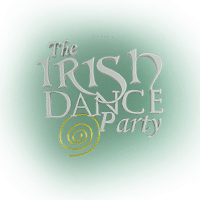Irish Dance’s Origins and History

Irish Dance: Where It All Began
Irish dancing is a kind of art that has taken over the world despite being banned in some places. What we think of as “traditional” Irish dancing today is actually just a small piece of a much larger story that spans generations. Dating all the way back to the 5th century BC, Irish dance has been celebrated all over the world for thousands of years. In those days, the Celtic people known as the Gauls appeared and established their own nation. The Irish people were nearly wiped out by the Roman Empire, but some survivors remain today.
Changes happened in Irish dance history after the country’s conversion to Christianity, which happened about the year 400. The old pagan style was changed by the new Catholic priests, but the peasants kept the Celtic traditions alive in their music and dances.
Middle Ages
The Christian church banned the study of Irish dancing for centuries, but by the 16th century, it had already become popular in palaces. Bagpipes and harps were played in the background to accompany the Irish dances. The master of an Anglo-Irish manor would sometimes dance with the peasants.
In the 17th century, priests said that the ritual hand movements were evil and sinister. Since then, the performance just involves moving the legs and keeping the hands still on the belt. This, by the way, is why dancers need heels. Given the dancers’ near-total lack of upper-body movement, the viewers’ eyes are glued to their legs. The dancers’ legs are struck with rhythm and power as they force all of their inner emotions into the performance.
In the 1800s, amazing things like the Dance Masters started to happen. They were nomadic dance instructors who went from settlement to settlement teaching the locals several steps. Every Dance Master stayed inside his own area, never venturing into another’s area to share his knowledge. Whenever the Dance Masters would run into each other at the fairs, they would challenge each other to a public dance competition that would last until one of them fell from exhaustion.
Nowadays
Competitions between the greatest dancers in cities and villages came about around the turn of the 19th century. A massive tasty pie was presented to the winner.
All these little differences are what sets Irish dance apart.
Also, Irish folk music rightly holds the position as one of the world’s oldest musical traditions. It has a wide range of styles and sounds, but it is instantly recognisable all around the world because of its simple melodies and complex, comical rhythmic pattern. The Irish take great pride in the fact that they have preserved the Celtic musical traditions they inherited from previous generations.
Ireland has welcomed visitors and international students from all around the world and shared its culture with them for many years. The traditional music and dances of Ireland may be enjoyed through the efforts of the organisation “The Irish Dance Party.” Live Irish music, choreographed dances, and dancing classes are all available from experts. Whether you’re throwing a birthday bash, a company party, a stag do, or any other kind of event that calls for entertainment, award-winning Irish performers will guarantee that you have a good time.
